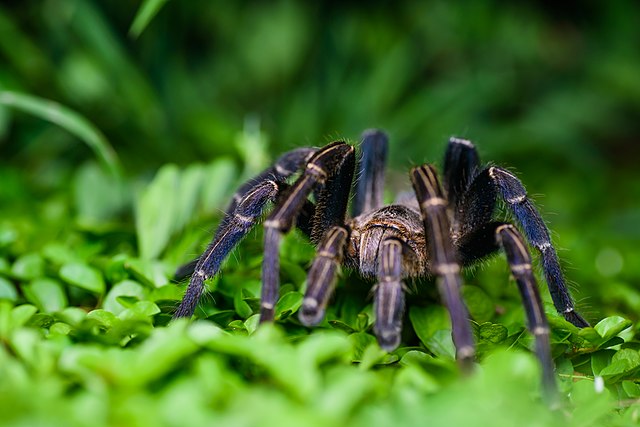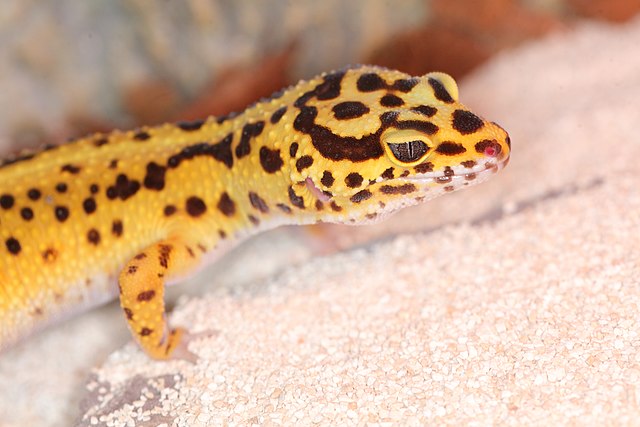Welcome, fellow arachnid enthusiasts, to a captivating exploration of the mesmerizing world of the cobalt blue tarantula (Haplopelma lividum)! Prepare to embark on an informative journey through the unique characteristics, proper care techniques, and responsible handling practices that define this captivating arachnid species. In this comprehensive guide, we’ll delve into the intricate details that set the cobalt blue tarantula apart, ensuring you have all the knowledge you need to provide the best possible care.
The Cobalt Blue Tarantula
The cobalt blue tarantula is not just any arachnid; it’s a creature of astonishing beauty that showcases a deep, captivating shade of blue reminiscent of the clear skies on a sunny day. Scientifically known as Haplopelma lividum, this species is a true gem within the world of tarantulas. With a leg span ranging from 4 to 5 inches, this arachnid commands attention with its impressive size and stunning appearance.
Natural Habitat and Distribution
To truly understand the cobalt blue tarantula, we must journey to its natural habitat in Southeast Asia. Found predominantly in regions such as Thailand, Cambodia, and Vietnam, this species thrives in lush environments with humidity levels ranging from 70% to 80% and temperatures hovering between 75°F and 85°F (24°C to 29°C). Mimicking these conditions in captivity is paramount for the well-being of your cobalt blue tarantula.
Housing and Enclosure Setup
Crafting a suitable and comfortable home for your cobalt blue tarantula is akin to curating a tiny ecosystem within the confines of a terrarium. Ensuring that the enclosure mimics their natural habitat is vital to their well-being. Let’s delve into the intricacies of housing and enclosure setup to create the perfect haven for your eight-legged companion.
Choosing the Right Enclosure
Selecting an appropriate enclosure for your cobalt blue tarantula is the foundation of its care. Aim for an enclosure that provides ample space for the tarantula to move around comfortably. A terrarium measuring at least 10x10x10 inches is a good starting point for adult specimens, while juveniles can thrive in smaller enclosures temporarily. Keep in mind that a well-ventilated enclosure is essential to prevent excess humidity and stagnant air.
Substrate Selection
The substrate within the enclosure serves multiple purposes—it retains moisture, aids in molting, and creates a natural environment for your tarantula to explore. A mixture of coconut fiber and vermiculite works well, offering a balance between moisture retention and drainage. Aim for a substrate depth of around 2 to 3 inches, which allows your tarantula to burrow and create hiding spots.

Creating a Tarantula Paradise
Enhance the enclosure with elements that replicate the cobalt blue tarantula’s native habitat. Place various pieces of cork bark, hollow logs, and artificial plants to create hiding spots and climbing opportunities. These additions not only serve as enrichment but also help alleviate stress by providing secure retreats for your tarantula.
Temperature and Humidity
Maintaining the appropriate temperature and humidity levels is crucial to the health of your cobalt blue tarantula. Aim for a temperature range of 75°F to 85°F (24°C to 29°C), which reflects their natural environment. To maintain a humidity level of 70% to 80%, mist the enclosure lightly every few days. Using a hygrometer and thermometer will help you monitor and adjust these conditions accurately.
Furnishing the Habitat
A shallow water dish filled with clean, chlorine-free water should be present within the enclosure. This serves not only as a water source but also as a way to increase humidity levels when necessary. Ensure the dish is shallow to prevent accidental drowning.
Avoiding Potential Hazards
While decorating the enclosure, keep the tarantula’s safety in mind. Avoid using any toxic materials, pesticides, or plants that could be harmful to your pet. Additionally, ensure that all items within the enclosure are securely positioned to prevent collapses that might harm the tarantula.
Observing Natural Behaviors
After setting up the enclosure, take time to observe your cobalt blue tarantula as it explores its new habitat. Watch for behaviors such as burrowing, web-spinning, and climbing, which offer insights into your pet’s comfort and well-being.
Feeding and Diet
Embark on a journey into the captivating world of the cobalt blue tarantula’s feeding habits—a realm that unveils the intricacies of their diet and the vital role it plays in their well-being.
Diverse Palate
The cobalt blue tarantula’s diet revolves around a diverse range of insects, from crickets to roaches, showcasing their role as skilled predators within their ecosystem.
Feeding Frequency
The frequency of feeding varies with age and growth stage. Juveniles require more frequent meals, typically every 3 to 5 days, while adults can be fed every 7 to 10 days to prevent overfeeding and maintain optimal health.

Proper Presentation
Present live prey appropriately sized for your tarantula—no larger than their body length—to stimulate their hunting instincts and ensure a successful capture.
Feeding Behaviors
Observing feeding behaviors provides valuable insights into their natural instincts and behaviors. They immobilize prey with venomous bites and use specialized mouthparts to consume it.
Hydration and Nutrition
While prey provides hydration, a shallow water dish within their enclosure serves as a supplementary water source. Offering a variety of prey items enhances their nutritional intake.
Adapting to Growth
As your cobalt blue tarantula grows, its nutritional needs may change. Adjust feeding habits accordingly, focusing on growth support for juveniles and maintaining well-being in adulthood.
Culinary Curators
Acting as the culinary curator for your tarantula is not just about sustenance—it’s a testament to your dedication to their care and a connection to the intricate balance of predator and prey in the natural world.
As you provide the nourishment that fuels their vitality, you become an integral part of their story within the vast tapestry of life.
Handling and Temperament
While the allure of holding a cobalt blue tarantula may be undeniable, it’s essential to prioritize the well-being of the arachnid. With a skittish and defensive nature, this species is not suited for handling. Instead, find joy in observing its behavior from a distance and creating an environment that promotes its natural behaviors and overall comfort.
Handling a cobalt blue tarantula or any other exotic pet requires a deep respect for their intrinsic behaviors. When approached or touched, they may become stressed, leading to defensive reactions. These can include rearing up on their hind legs, displaying their fangs, or even releasing urticating hairs that can cause irritation. Such behaviors are not indicative of aggression but rather a defense mechanism.
If interaction is sought, consider alternative means that minimize stress. Setting up a terrarium with clear sides allows for easy observation without direct contact. Additionally, capturing their activities through photos or videos provides a way to immortalize their beauty while maintaining their comfort.
Breeding and Reproduction
Breeding the cobalt blue tarantula unveils a spectacle of behaviors as complex as they are enthralling. Courtship begins with a delicate dance—an intricate choreography of movements, vibrations, and palpations that establishes the foundation for successful reproduction. The male’s role is especially noteworthy, as he must navigate both the tarantula’s temperament and the intricacies of courtship to win the female’s favor.

Upon successful courtship, the female tarantula constructs an egg sac—an architectural marvel that safeguards the developing eggs. Careful considerations, such as humidity and temperature levels, are paramount to ensure the survival of the embryos. As the eggs mature, the egg sac takes on an almost radiant appearance, hinting at the life within.
Interestingly, cobalt blue tarantulas display a form of maternal care that’s uncommon among arachnids. The female guards her egg sac with unwavering dedication, often refusing food and expending energy to ensure the safety of her offspring. Once hatched, spiderlings sometimes stay in close proximity to their mother—a behavior that offers protection and guidance during their early stages.
Conservation Status and Legal Considerations
Beyond their captivating appearance, cobalt blue tarantulas play a role in maintaining the delicate balance of ecosystems. While their conservation status may not be as prominent as larger species, responsible ownership is essential for preserving biodiversity. Familiarize yourself with the legal considerations surrounding tarantula ownership, as regulations can vary based on your location.
Frequently Asked Questions
- Are cobalt blue tarantulas suitable for beginners? Due to their delicate nature and specialized care requirements, cobalt blue tarantulas are best suited for experienced tarantula keepers.
- Can I house multiple cobalt blue tarantulas together? It is generally advisable to house them individually, as tarantulas are solitary creatures that may exhibit territorial behavior.
- How often do cobalt blue tarantulas molt? The frequency of molting varies, occurring more frequently during the juvenile stage and less frequently in adulthood.

Conclusion
In closing, our exploration into the captivating world of cobalt blue tarantulas highlights the significance of understanding and respecting these unique creatures. Beyond their stunning appearance, these arachnids offer us a glimpse into the complexity and diversity of life on our planet. By embracing the responsibility of caring for them, we not only enrich our own lives but also contribute to the conservation of these remarkable beings.








